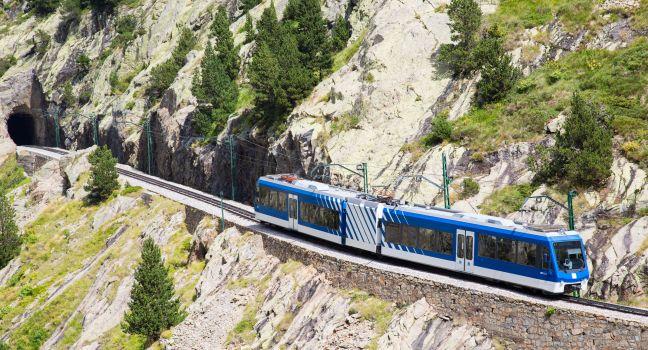Vall de Núria Rack Railway (Cremallera)

The 45-minute train ride from the town of Ribes de Freser up to Núria provides one of Catalonia's most eclectic excursions—in few other places in Spain does a train make such a precipitous ascent. The cogwheel train, nicknamed La Cremallera ("The Zipper" in English), was completed in 1931 to connect Ribes with the Santuari de la Mare de Déu de Núria (Mother of God of Núria) and with hiking trails and ski runs.



